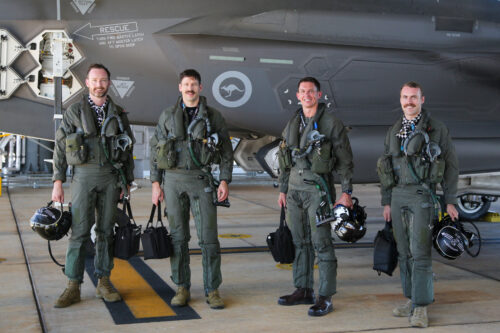In June 2024, during a joint training exercise at RAAF Base Tindal, Australia, two United States Marine Corps (USMC) F-35B pilots from Marine Fighter Attack Squadron (VMFA) 214 successfully flew Royal Australian Air Force (RAAF) F-35A aircraft. This accomplishment signifies a significant step towards interchangeable operations between the two forces.

Lt. Col. Robert Guyette, VMFA-214’s commanding officer, emphasizes the distinction between interoperability, where forces can work together, and interchangeability, where resources like pilots and aircraft can be freely shared. This pilot exchange program represents a key step towards achieving the latter.
This success is a culmination of ongoing training exercises between USMC and RAAF F-35 squadrons throughout the past year. These exercises focused on building tactical, technical, and interpersonal coordination between the two forces.
The recent pilot exchange program provided a strong demonstration of F-35B pilot interchangeability with the F-35A variant. USMC Lt. Col. Robert Guyette, VMFA-214’s commanding officer, highlighted this ease of transition, stating, “When the XO and I flew in the RAAF F-35As, we spent zero time briefing procedural differences in execution, because we have been adhering to the same standards as the RAAF from day one.” This shared foundation in training and procedures minimizes the time and complexity required for USMC F-35B pilots to transition to the F-35A. As a result, interchangeable pilots can be rapidly deployed in times of crisis, maximizing the effectiveness of combined USMC-RAAF operations.
This achievement follows a similar deployment in 2023, where Marine Fighter Attack Squadron (VMFA) 314, a USMC F-35C variant squadron, deployed to RAAF Base Williamtown, Australia, to train alongside RAAF No. 3 Squadron. This earlier deployment provided valuable experience and insights that proved instrumental in the success of VMFA-214’s mission in 2024.
VMFA-314’s deployment focused on establishing foundational interchangeability procedures between USMC F-35C pilots and RAAF F-35A pilots. Their joint training exercises ironed out any potential wrinkles in communication, logistics, and operational integration. The lessons learned and best practices developed during VMFA-314’s deployment formed a critical knowledge base that VMFA-214 was able to leverage in 2024. This continuity significantly reduced the planning and preparation workload for VMFA-214, allowing them to focus on refining pilot interchangeability and expanding the scope of joint training exercises.
This pilot exchange program signifies a major advancement in USMC-RAAF cooperation. It demonstrates the F-35’s versatility as a platform for joint operations and paves the way for seamless collaboration in future multinational deployments.
For more information, hit the Source below